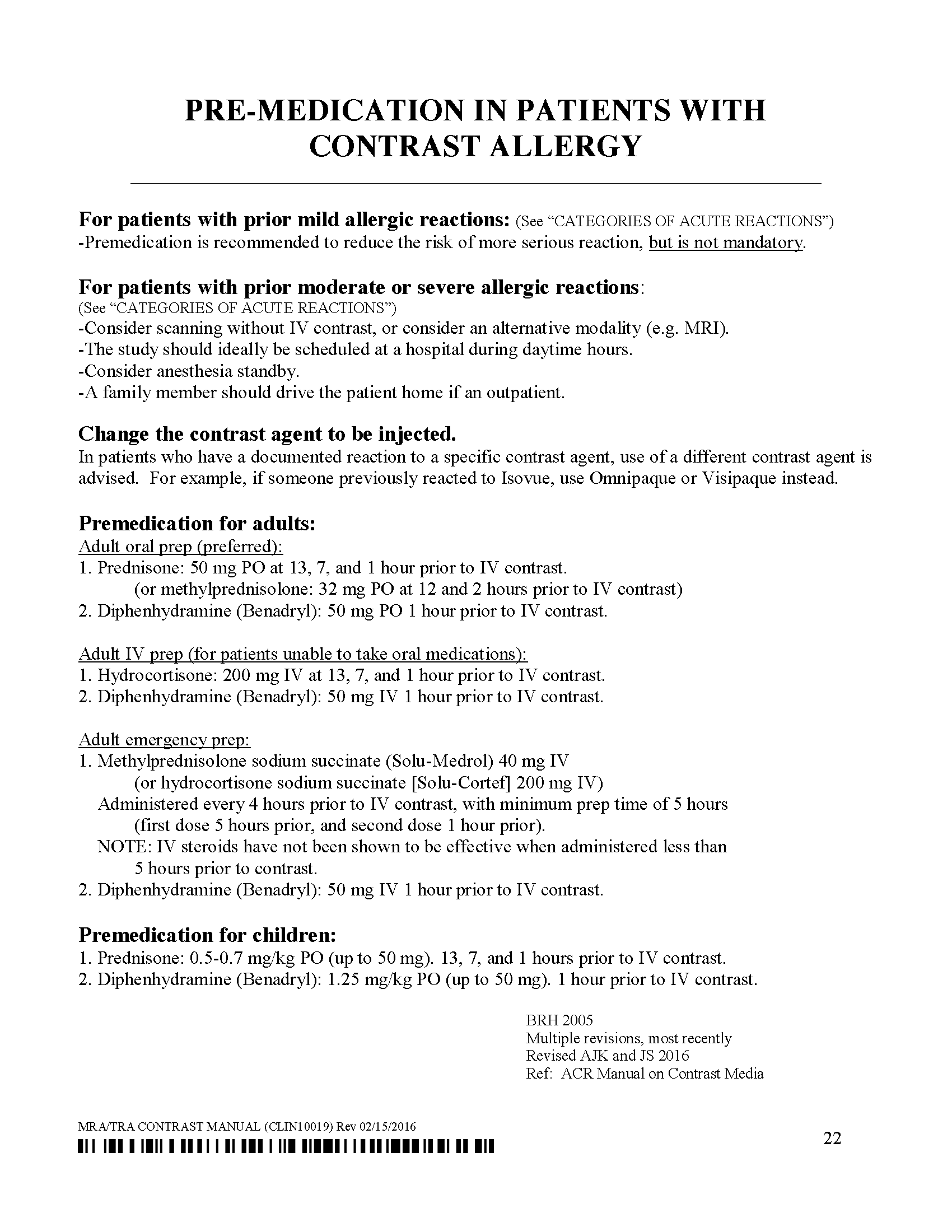PREMEDICATION FOR PATIENTS WITH CONTRAST ALLERGIES
Patients with an established contrast allergy (either to iodinated contrast or Gadolinium-containg contrast) may require a premedication regimen to help reduce the liklihood and severity of a reaction. Contrast reactions are very rare, particularly with currently utilized non-ionic agents, but do occur and can be life threatening. Unfortunately, the mechanism for most reactions remains unclear. Most contrast allergies are anaphylactoid rather than anaphylactic (see below). Shellfish allergies are not related to iodinated contrast; the allergan is the shellfish tropomyosin and we therefore do not routinely withold contrast administration in such patients.
Anaphylactoid reactions to contrast differ from anaphylactic reactions as follows. Anaphylactoid reactions……
- Can occur upon first exposure.
- Severity is not dose related.
- No IgE antibodies have been isolated (?)
–Rare cases exist that appear IgE mediated- these are at a higher risk of breakthrough rxns.
–AJR:190, March 2008 - Not 100% have subsequent reactions.
- Nonspecific activation of the complement pathway.
- Release histamine, serotonin, bradykinin, adenosine, prostaglandins, and leokotrienes.
The efficacy of contrast premedication thus remains controversial. Noncontrast alternatives should therefore be considered and utilized when feasible (e.g. V/Q exam instead of CT pulmonary angiography). When there is no reasonable alternative and/or when the risk of undergoing the contrast procedure is outweighed by the risk of the diagnostic uncertainty at hand, the patient should undergo contrast allergy premedication. The following is a summary of our approach, which was established using the ACR Contrast Manual as a primary reference. Please note that corticosteroid administration is unlikely to provide any benefit if administered less than 4 hours prior to contrast administration. See also “Iodine-containing Contrast FAQs”


